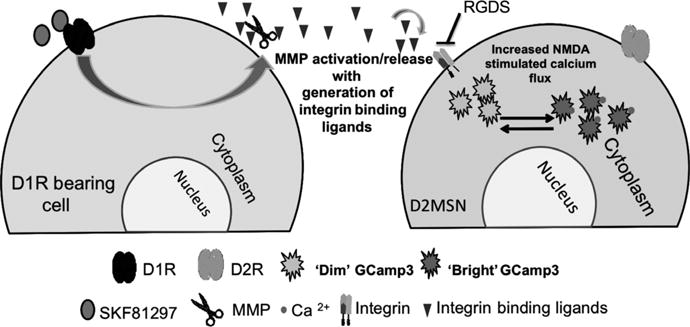Fig. 5.

Hypothetical model of SKF81297 action in the striatum. SKF81297 acts on D1-like dopamine (DA) receptors to increase matrix metalloproteinase (MMP) release and/or activation with subsequent generation of integrin-binding ligands. Increased integrin signalling leads to enhanced calcium flux following exposure to N-methyl-D-aspartate (NMDA). Enhanced calcium flux could follow from increased entry through GluNs, in that subunit phosphorylation and receptor function are modulated by integrin-dependent signalling cascades (Bernard-Trifilo et al., 2005). Enhanced flux could also follow from secondary neuromodulatory mechanisms, including effects on ion channels, by which integrin engagement may stimulate an increase in intracellular free calcium (Wu et al., 1998; Wildering et al., 2002).
